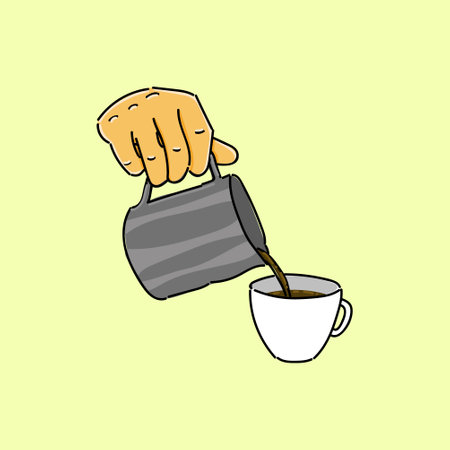Choosing Your Espresso Machine
If you’re serious about pulling café-quality espresso shots at home, the first step is selecting the right espresso machine. With so many options on the market, it’s important to understand the main types available and what features matter most. The three most popular categories for home use are manual, semi-automatic, and fully automatic machines.
Manual Espresso Machines
Manual lever machines give you complete control over every aspect of extraction. They require more skill but reward you with an authentic barista experience and fine-tuned results. Look for models with solid build quality and a reliable boiler if you’re drawn to hands-on brewing and don’t mind the learning curve.
Semi-Automatic Machines
Semi-automatic machines strike a balance between control and convenience. You grind, tamp, and start/stop the shot, while the machine handles water pressure. Features like PID temperature control, commercial-grade portafilters, and steam wands can make a big difference in cup quality. These are ideal for beginners who want to learn the craft without getting overwhelmed.
Fully Automatic & Super-Automatic Machines
If speed and simplicity are your top priorities, consider a fully automatic or super-automatic machine. These devices handle grinding, dosing, tamping, extraction, and sometimes even milk frothing at the push of a button. Key features to compare include grinder type (ceramic vs stainless steel), programmability, milk system options, and ease of cleaning.
What to Look For
Your choice should reflect your brewing goals and budget. Think about how much hands-on involvement you want, how much counter space you have, and whether you value upgrade potential down the line. Higher-end machines often offer better temperature stability, pressure consistency, and durability—important factors for achieving consistently great espresso at home.
2. Selecting Fresh Coffee Beans
If you want to pull the perfect espresso shot at home, your journey starts with choosing the right coffee beans. The quality and freshness of your beans play a huge role in the flavor, aroma, and crema of your espresso. Let’s break down what makes an excellent espresso bean, how to navigate roast levels, and tips for finding top-notch beans in the American market.
What Makes a Great Espresso Bean?
Espresso requires beans that deliver balanced flavors under high pressure. While any coffee bean can technically be used, certain characteristics make some beans stand out for espresso:
- Freshness: Always opt for recently roasted beans—ideally within two weeks of their roast date—to maximize flavor and crema.
- Origin: Single-origin beans can offer unique profiles, while blends are crafted for balance and consistency, which many American cafes favor.
- Processing Method: Washed or natural-processed beans influence sweetness, acidity, and body. Choose based on your taste preference.
Choosing the Right Roast Level
The roast level impacts how your espresso will taste. Here’s a quick guide to common roast types found in the U.S.:
| Roast Level | Flavor Profile | Espresso Suitability |
|---|---|---|
| Light Roast | Bright acidity, floral, fruity notes | Great for adventurous palates; can highlight origin flavors but may lack traditional body and crema |
| Medium Roast | Balanced acidity & sweetness, nutty or chocolaty notes | The “sweet spot” for many Americans; offers complexity and smoothness ideal for espresso |
| Dark Roast | Bitter-sweet, smoky, low acidity | Classic Italian-style espresso; bold flavors with pronounced crema but less origin character |
Tips for Finding High-Quality Beans in the U.S.
- Buy Local: Support American specialty roasters who prioritize freshness and transparency about origin and roast date.
- Avoid Pre-Ground Coffee: Whole beans maintain their freshness longer—grind just before brewing for best results.
- Check Labels: Look for roast dates (not “best by” dates), certifications like Fair Trade or Organic, and tasting notes that match your preferences.
- Experiment: Don’t be afraid to try different roasters or single-origin offerings from U.S.-based shops—many offer sampler packs tailored to espresso enthusiasts.
The Takeaway
Selecting fresh, high-quality coffee beans is essential for pulling a café-worthy espresso shot at home. By understanding what makes a great espresso bean and making informed choices based on roast level and sourcing practices popular in America, you set yourself up for success every time you pull that lever or hit that brew button.

3. Grinding for Espresso Perfection
If you want to pull a truly great espresso shot at home, it all starts with the grind. The size and consistency of your coffee grounds are just as important as the beans you choose or the espresso machine you use. In fact, mastering your grind is the secret weapon for unlocking rich, balanced flavors in every cup.
Why Grind Size Matters
Espresso requires a fine grind—think table salt rather than coarse sea salt. A grind thats too coarse will let water shoot through too quickly, resulting in weak, sour shots. Too fine, and youll choke the machine, ending up with bitter, over-extracted coffee. Aim for a texture thats powdery but still gritty when rubbed between your fingers.
The Role of Consistency
Even if you dial in the right size, inconsistent particle sizes can ruin your shot. Uneven grinds create channels in the puck, leading to under- and over-extraction in the same shot. This results in muddy flavors and lack of crema—the hallmark of quality espresso. Uniform grounds mean even extraction and flavor clarity.
The Burr Grinder Advantage
This is where a good burr grinder comes into play. Unlike blade grinders that chop beans unevenly, burr grinders crush them between two surfaces, producing a consistent grind every time. Adjustable settings let you fine-tune your grind size based on your beans and brewing method—essential for dialing in that perfect shot at home.
Recommended Gear
If youre just getting started, entry-level burr grinders like the Baratza Encore or Breville Smart Grinder Pro offer great performance without breaking the bank. For serious home baristas looking for precision, models like the Baratza Sette 270 or Eureka Mignon Specialita deliver pro-level results and repeatability.
Remember: Invest in a quality burr grinder before splurging on an expensive espresso machine. The right grinder unlocks flavor potential from your beans and elevates every shot you pull—no matter your skill level.
4. Dialing in Dose and Tamping Technique
If you want to pull café-quality espresso shots at home, getting your dose and tamping technique right is non-negotiable. These two steps are fundamental for achieving consistent extractions, ensuring every shot delivers balanced flavor and proper crema. Let’s break down what you need to know.
How Much Coffee Should You Use?
The “dose” refers to the amount of ground coffee you put into your portafilter. For most standard double shots (which is typical in the U.S.), you’ll want to use between 18 and 20 grams of finely ground coffee. Single baskets usually require around 8–10 grams, while triple baskets can go up to 22 grams or more. Consistency is key, so always weigh your dose using a digital scale for repeatable results.
| Basket Size | Typical Dose (grams) | Shot Type |
|---|---|---|
| Single | 8–10g | Single Espresso |
| Double | 18–20g | Double Espresso (Standard in U.S.) |
| Triple | 21–22g+ | Triple Espresso |
The Basics of Proper Tamping
Tamping compresses the coffee grounds evenly in the portafilter basket, creating resistance for water to extract those delicious flavors. Here’s how to tamp like a pro:
- Distribute Evenly: Gently shake or tap the portafilter to level out the grounds before tamping.
- Tamp with Consistent Pressure: Aim for about 30 pounds of pressure—firm but not excessive. Many American home baristas use a bathroom scale at first to get a feel for this force.
- Keep It Level: Hold your tamper flat and press straight down. A crooked tamp leads to uneven extraction and channeling.
- Polish if Desired: Some people like to give the tamper a little twist at the end to smooth out the surface.
Why Dose and Tamping Matter
If your dose is inconsistent or your tamp is uneven, you’ll end up with sour, bitter, or weak espresso shots. Uniform dosing and tamping ensure that water flows evenly through the puck, extracting all the right flavors from your beans. Master these basics, and you’ll be well on your way to pulling perfect espresso at home—just like your favorite local café.
5. Mastering the Pull: Time, Temperature, and Pressure
Dialing in the perfect espresso shot at home comes down to mastering three essential variables: shot time, water temperature, and pressure. These factors directly influence the flavor, body, and crema of your espresso—and thankfully, most American home machines offer ways to tweak each for optimal results.
Shot Time
Shot time refers to how long it takes to extract a standard espresso shot, typically measured from the moment you activate the brew switch to when the desired volume is reached. For classic espresso, aim for 25-30 seconds for a double shot (about 1.5-2 ounces). Too short and your shot will taste sour and under-extracted; too long and youll get bitter, over-extracted flavors. Most home machines let you manually control this with a start/stop button or lever.
Water Temperature
Espresso extraction happens best between 195°F and 205°F. If your machine has a PID controller or digital thermometer, use it to dial in within this range—lower temps can mute flavors, while higher temps may scorch the coffee. Entry-level American machines might have preset temperatures, but many mid-range models now allow temperature tweaks via built-in controls or smartphone apps.
Pressure
The industry standard for espresso is about 9 bars of pressure during extraction. Some home machines feature adjustable pumps or over-pressure valves (OPVs), letting you fine-tune this variable. Too little pressure leads to weak shots; too much results in bitterness and channeling. Check if your model allows manual adjustment or if you need an aftermarket mod—many U.S.-market prosumer machines advertise customizable pressure as a selling point.
Finding Your Sweet Spot
When starting out, stick with manufacturer recommendations for time, temp, and pressure, then adjust one variable at a time based on taste. Keep notes—American home baristas often use shot logs or apps to track changes until they lock in their favorite settings. With practice and patience, you’ll discover how small tweaks can bring café-quality espresso right into your kitchen.
6. Troubleshooting and Fine-Tuning Your Espresso
Even with the best equipment and intentions, pulling espresso at home comes with its fair share of learning curves. Let’s break down some common challenges beginners face and how you can troubleshoot them for consistently great shots.
Common Issues and How to Fix Them
Under-Extracted Shots
If your espresso tastes sour, looks pale, or finishes too quickly (less than 20 seconds), you’re likely under-extracting. The most common causes are a grind that’s too coarse, not enough coffee in the portafilter, or tamping too lightly. To fix this, try using a finer grind setting, increasing your dose slightly (within your machine’s basket limits), or applying more pressure when tamping.
Over-Extracted Shots
On the flip side, if your espresso tastes bitter, is overly dark, or drips slowly (over 35 seconds), it’s probably over-extracted. This often results from grinding too fine, packing too much coffee, or tamping too hard. Adjust by coarsening your grind a notch or two, using a bit less coffee, or easing up on your tamp pressure until you find the right balance.
Basic Maintenance for Your Espresso Gear
Your espresso setup needs regular care to keep performing well. After each session, knock out spent grounds and rinse your portafilter and basket. At the end of the day, run water through your group head to clear any residue and wipe down steam wands with a damp cloth after every use. Deep clean your machine weekly using a blind filter and espresso cleaner to remove oils and buildup. Remember to descale your machine every few months (frequency depends on local water hardness) to prevent mineral deposits from affecting performance.
Pro Tip: Keep a Brew Log
If you’re still dialing in your shot, jot down variables like grind setting, dose weight, shot time, and taste notes. This makes it easier to identify patterns and perfect your process over time. With patience and attention to detail, you’ll be enjoying cafe-quality espresso from your own kitchen in no time!


